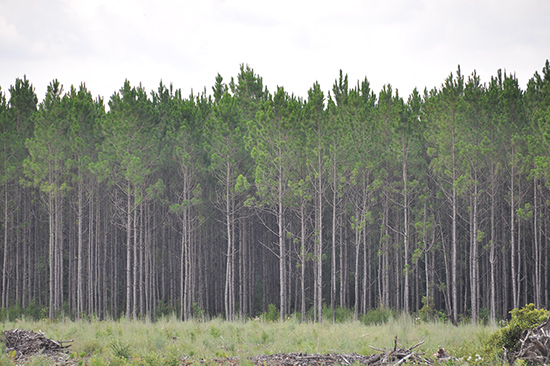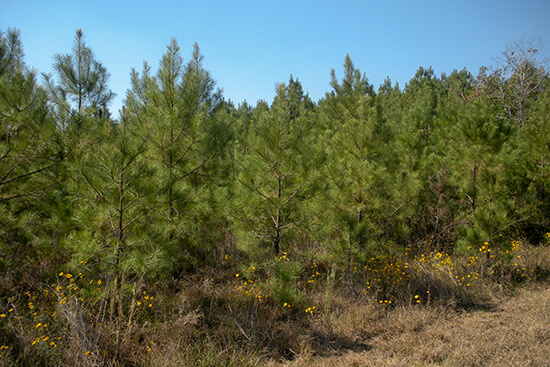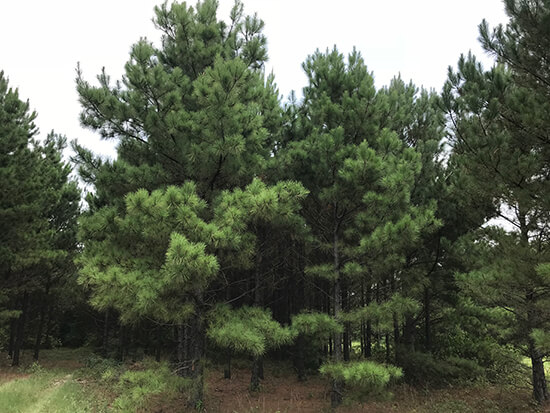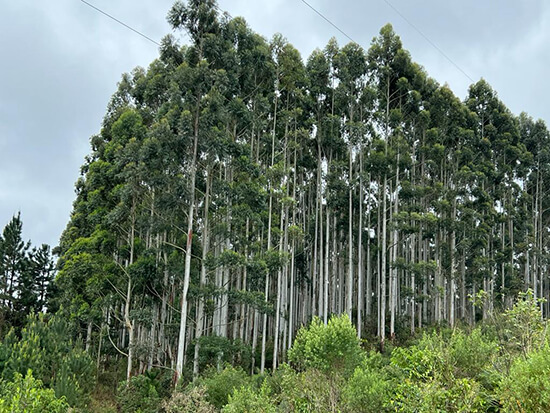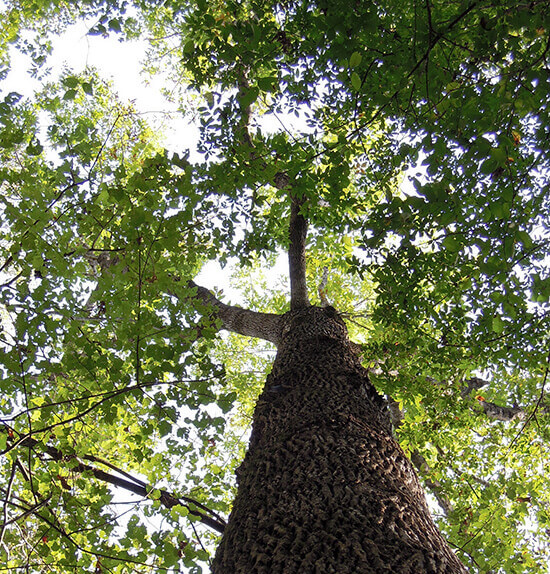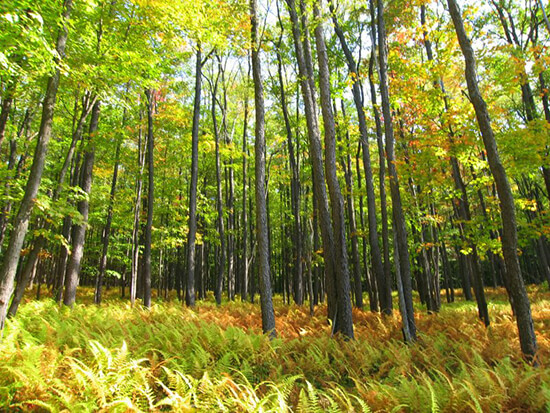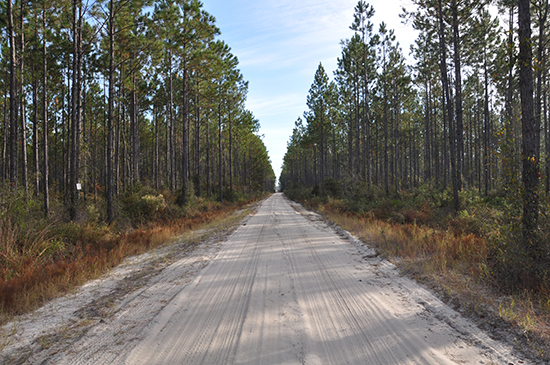In our third installment of a series of COVID-19 market updates, we focus on the recovery of housing, lumber, and sawtimber supply, demand and price. In general, construction, sawmill capacity, and sawtimber markets have been impacted to a greater extent than pulp and paper markets, including pulpwood, although coated and uncoated free sheet markets are down significantly in volume and price. Demand for lumber is primarily a function of both new housing starts and renovation and remodeling activity. Initial expectations were that both activities would be negatively impacted by the pandemic, but the opposite seems to be true as highlighted by a recent article in the Wall Street Journal[1]. Though housing and lumber demand data reveal that while new housing starts took a precipitous drop, renovation and remodeling activity has experienced substantial increases creating lumber supply chain challenges.
New Housing Starts
Housing starts fell precipitously at the beginning of the pandemic but are exhibiting initial signs of a quick recovery. Home buyers remain active in the market with inventory dwindling in most large metropolitan markets. The period from December 2019 to February 2020 averaged 1.61 million starts – the highest since the housing bubble in 2006 – 2007. Generally, annualized housing starts in excess of 1.5 million signal a strong and robust housing market that positively impacts lumber demand. The graph below depicts monthly annualized housing starts since 2016.
Monthly US Housing Starts (SAAR)

Lumber demand contracted as housing starts fell from 1.6 million (February 2020) when the pandemic started to a low of 934 thousand (April 2020)[2]. While thankfully not reaching the historic low following the Global Financial Crisis (GFC) of 477 thousand (April 2009), the reduction still represents a 42% drop in annualized housing starts. Sawmills acted accordingly by reducing, and in some cases even curtailing, production. However, housing starts for June 2020 reached 1.186 million with single family starts surpassing 800,000.
Monthly U.S. Softwood Lumber Production

Lumber Supply Chain Challenges
These substantial swings in housing starts and lumber demand have stressed the lumber supply chain. Beginning in mid-April, sawmills added back shifts and capacity idled at the beginning of the pandemic. With the surge in lumber demand from new home construction coupled with an unexpectedly robust renovation and remodeling activity, lumber, particularly treated lumber, has been in short supply. Lumber treating plants experienced similar trends as both lumber to treat and treating chemicals have become hard to procure. Treated lumber continues to be in short supply and it will take several more months until this supply chain fully recovers.
These trends have had a substantial impact on lumber futures. As shown below, lumber futures have been well above current prices since about a month into the pandemic. Rarely do lumber futures exhibit prices above $425 / MBF, but they are currently at $448 for (July), $438 (September), and $425 (November)[3]. Framing lumber composite prices increased from $348 / MBF to $498 / MBF between April 10th and July 3rd, 2020 – an astonishing 43% increase over roughly a three-month period. Mills continue to increase production to the fullest extent possible while dealing with operational challenges associated with COVID-19. Absent additional sawmill curtailments or increases in sawmill downtime, we expect lumber futures prices to moderate and composite framing lumber prices to remain in the $420/MBF to $450/MBF range. However, if additional “hotspots” of COVID-19 develop and sawmills are impacted, we expect some continued disruption of the lumber supply chain possibly putting additional upward pressure on lumber prices.
Framing Lumber and Structural Panel Composite Prices, DF #2 Price and Lumber Futures Price Trends

Framing Lumber and Structural Panel Composite Prices, Southern Pine Sawtimber Price, and Lumber Futures Price Trends

So, What Does All of this Mean for Sawtimber Prices?
Most framing lumber manufactured in the U.S. comes from sawmills in the Pacific Northwest and South. Demand for sawtimber to feed these sawmills has, over the past two months increased dramatically in both regions. Prices for sawtimber dropped as a result of reduced demand and the beginning of the pandemic in both the PNW and the South but prices are starting to recover in both regions. In the Pacific Northwest, prices for Douglas fir sawlogs dropped approximately 20% on average at the time of the pandemic, down to levels around $600/MBF. Since mid-June, we have had several timber sales in the range of $725/MBF to $750/MBF depending on specific market area, but primarily where local mill competition is the driving factor. While export log market demand is off somewhat, local mill demand is strong and increasing. Log inventories at most of these mills have been depleted since the pandemic began and remain low though lumber still being sold. Many mills will continue to be low on logs moving into fall and winter with continued strong lumber demand and prices. Hence, we expect to see further increases in sawtimber prices in the Pacific Northwest until next spring. With New Zealand reentering the Pacific Rim log market after their quarantine, Pacific Northwest export log markets are unsettled with current demand dropping. It is unclear how current U.S. trade policy will impact this market over the next year but if export markets also strengthen then further upward pressure on Douglas fir prices will result.
It is important to note that the Pacific Northwest sawtimber resource is considerably smaller than the South in both acreage and standing inventory. Hence, changes in demand for sawtimber logs (increases in lumber demand) move prices far more quickly in the Pacific Northwest than in many of the markets in the South. Many, if not most of the local PNW markets are relatively balanced between growth and harvest which is not the case with many southern markets. Recent sawtimber log price trends in the PNW indicate this through increased volatility in historical prices.
Prices for #2 Douglas Fir Logs

Southern sawtimber prices have yet to show significant increases due to the fluctuations in lumber demand during the pandemic. As mentioned above, the Southern sawtimber resource is larger and growth-to-harvest ratios in many southern wood-baskets are still well above 1.0 indicating a plentiful and increasing supply of sawtimber. Some specific markets exhibit sensitivity to increasing sawtimber demand, but most basins need continued and sustained increases in sawtimber demand for prices to respond. Hence, we expect Southern sawtimber prices to be less responsive to these increases in demand in the short-to-medium term as most markets are still are working through the sawtimber overhang built up after the GFC. Southern sawtimber markets continue to develop in basin specific ways due to both supply and demand changes. New sawmill capacity has not been installed uniformly across the South, and some basins have seen large increases in capacity while others continue to experience reductions. Hence, the recovery in the South will be very localized with certain markets more responsive in sawtimber price movement than others.
As some expected, the COVID-19 recovery for timberland and timberland markets has, thus far, been a “V-shaped” recovery. The next question will be how the trend of rising case numbers will impact the longer-term recovery. Additionally, with various programs aimed at providing short-term economic stimulus winding down, how will the general economy continue to recover? Some still predict significant default rates on mortgages and rents after the initial “forgiveness period” lapses. Many, if not most, economists are still concerned about a delayed negative response as the pandemic stretches on in time. These concerns, if true, may place additional downward pressure on the timber sector in the coming months.
[1] America Is on a Lumber Binge, Ryan Dezember, The Wall Street Journal, July 9, 2020
[2] Source: U.S. Census Bureau
[3] Source: Random Lengths



